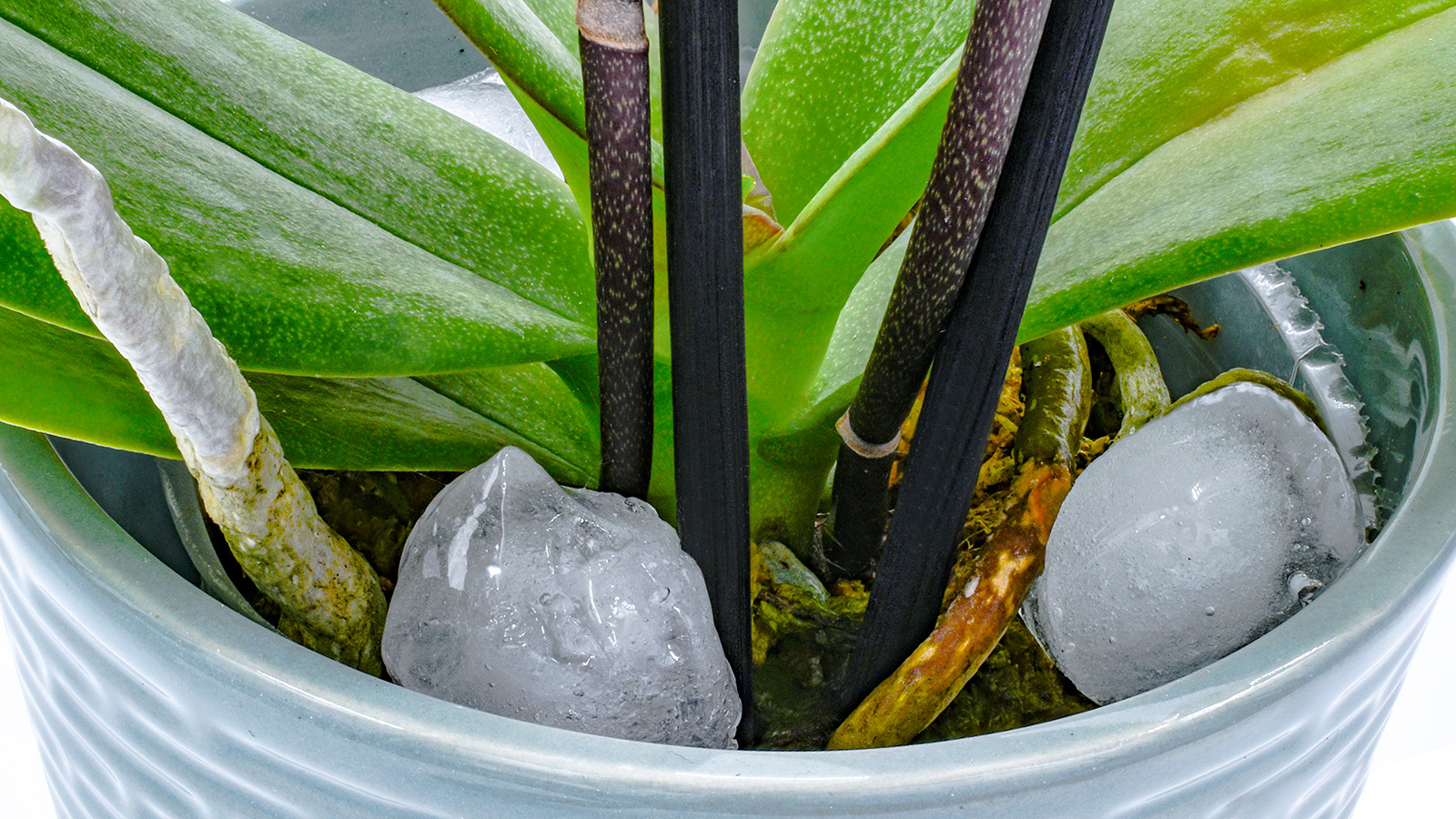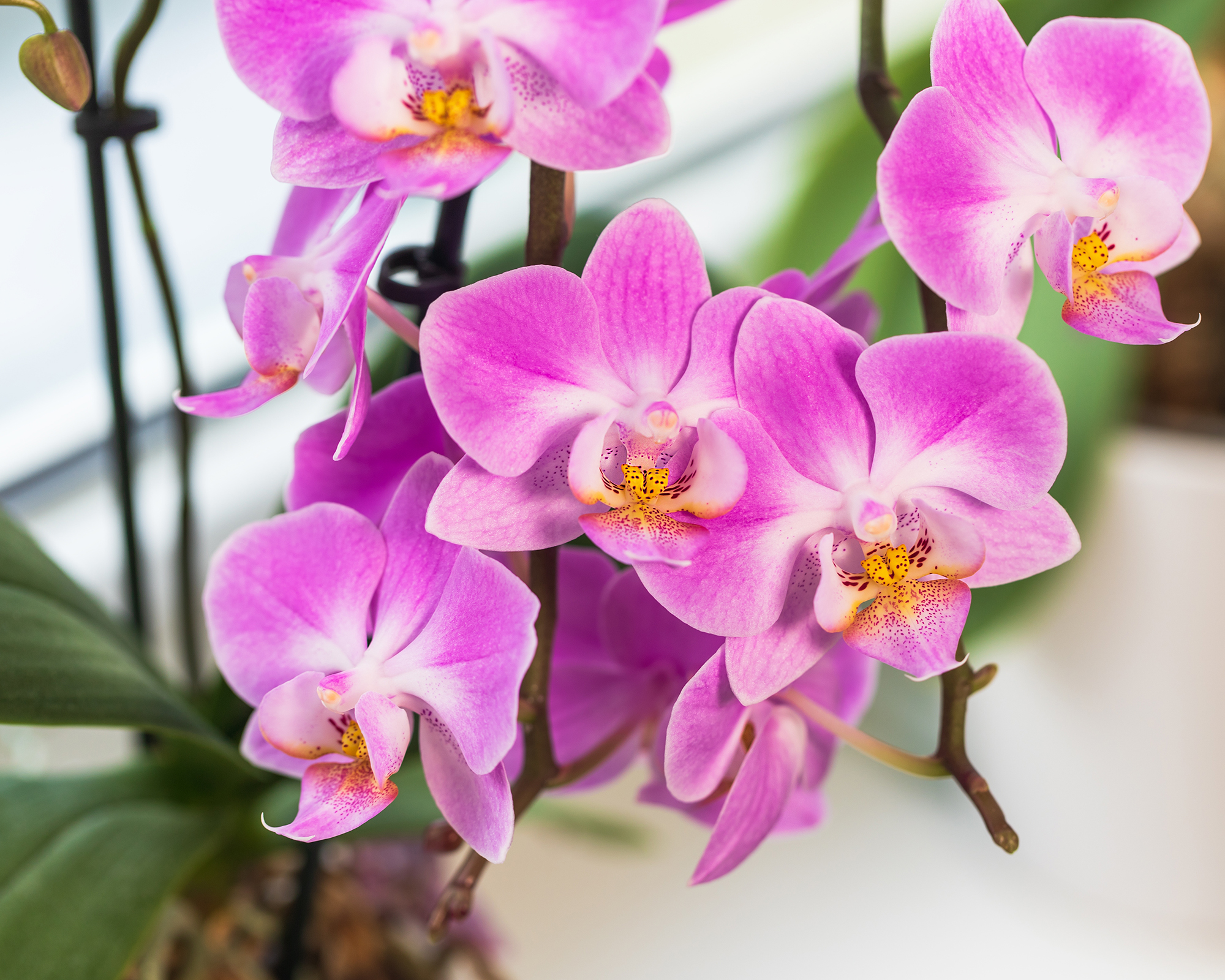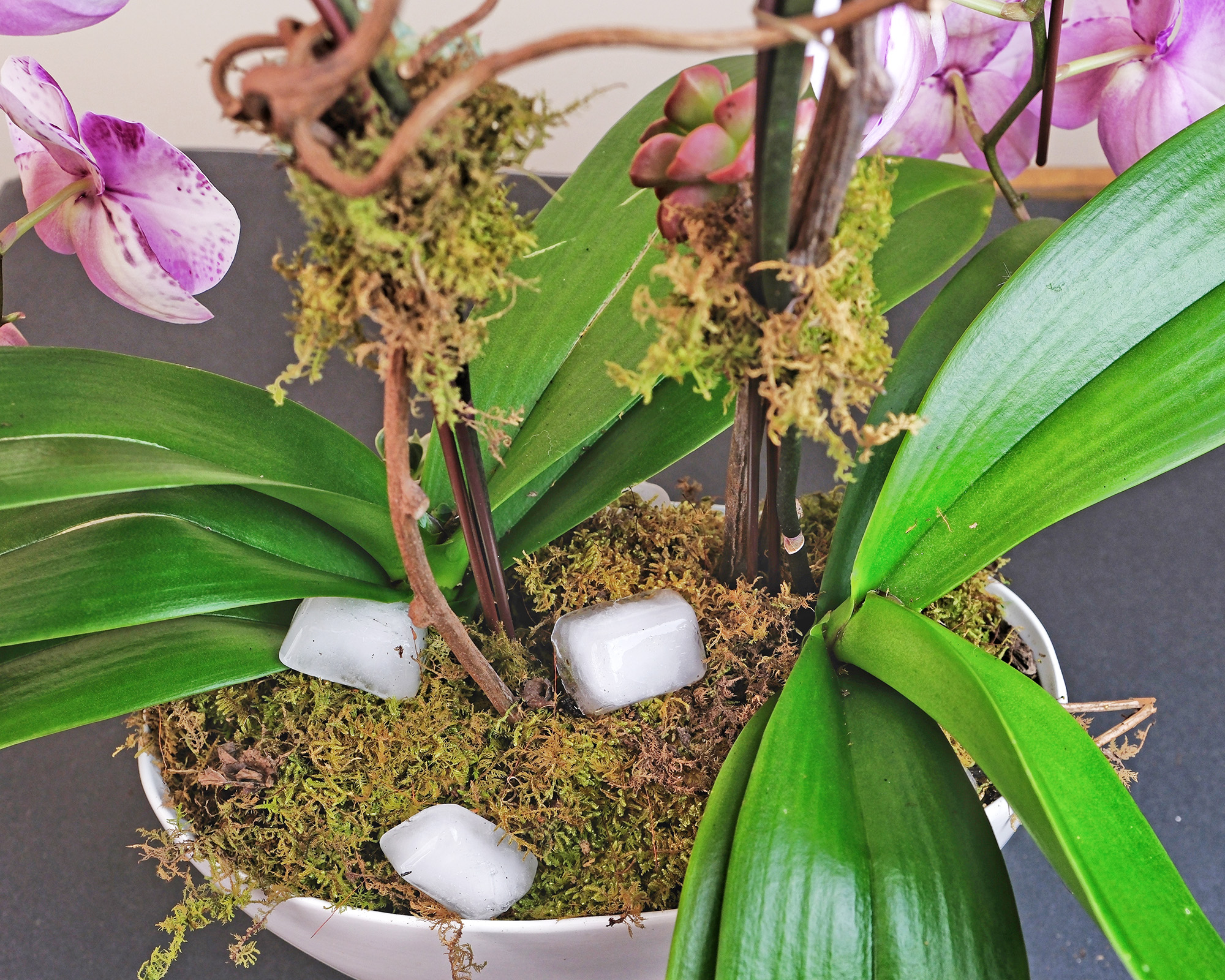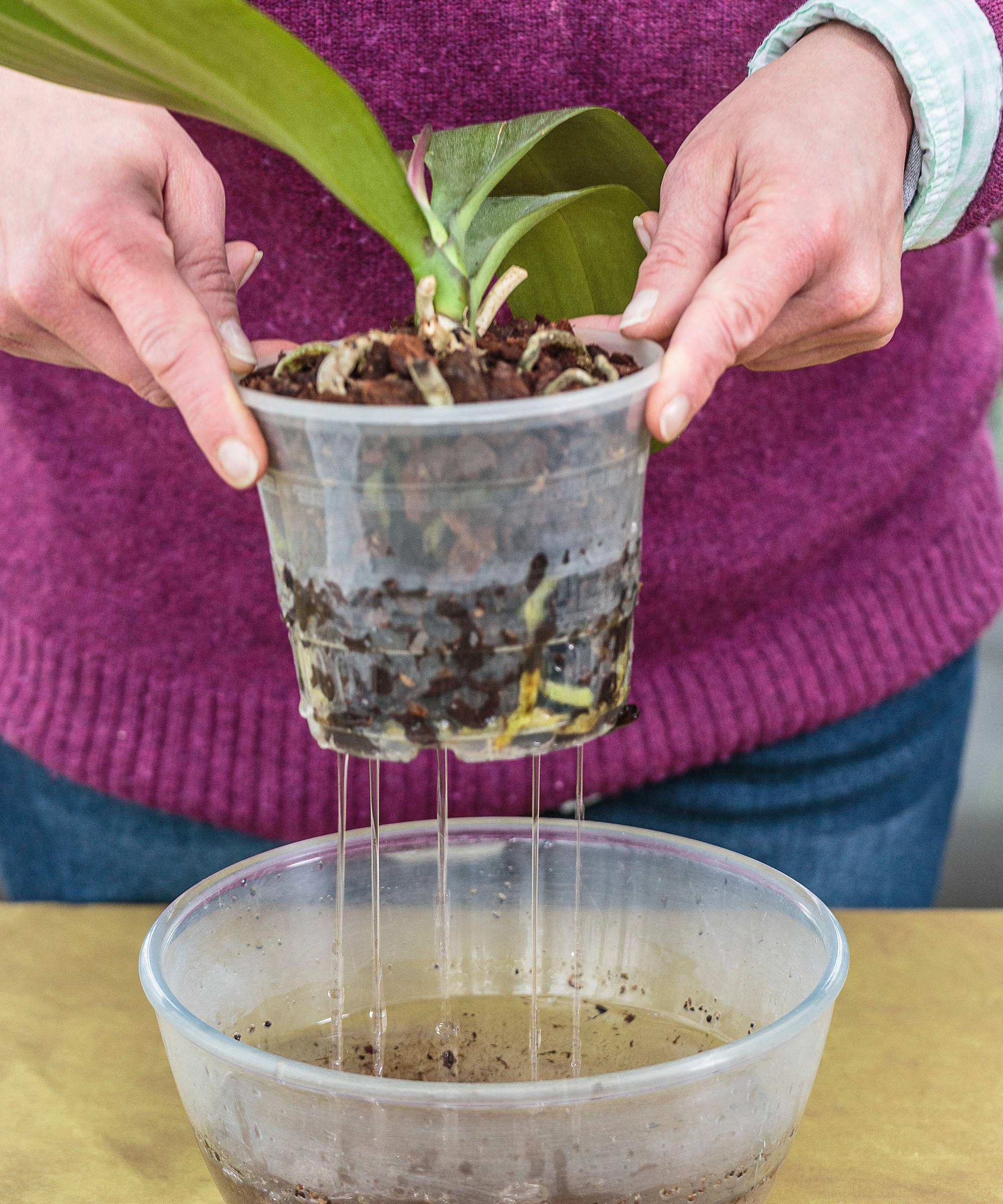Should You Water Orchids With Ice Cubes? Discover The Pros And Cons Of This Controversial Method
Curious about watering orchids with ice cubes? Learn the benefits and drawbacks of this popular method to keep your plants healthy and thriving.

Melanie Griffiths

Watering orchids with ice cubes sounds like a simple, foolproof way to keep these picky houseplants hydrated – but is it the right thing to do?
Orchids are often labeled as difficult to grow, and there is much confusion surrounding how to water orchids – and how often to do it.
However, good orchid care is easy if you understand their needs. If you can position plants where they will receive their ideal temperature and light levels, they require minimal attention. Preferences vary between different types of orchids, so it's best to choose a plant compatible with your home environment.
Ironically, overzealous care is so often the cause of their demise and remains one of the most common orchid care mistakes. When orchids are overwatered, it causes serious issues such as orchid root rot and crown rot. If this happens, knowing how to revive an orchid is vital to prevent plant death.
The trend of watering orchids with ice cubes emerged a few years ago intending to simplify the care process, but it remains a controversial method.

Why Use Ice Cubes?
You may have seen potted orchids sold in stores with tags explaining how easy they are to water just using ice cubes. This is a marketing tactic designed to assure consumers that orchids are easy to care for.
If you’re not an orchid expert, then watering them can feel like a futile guessing game. Too much water and the orchid roots may rot and kill the plant. Too little, and the orchid will dry up like a raisin.
Sign up for the Gardening Know How newsletter today and receive a free copy of our e-book "How to Grow Delicious Tomatoes".
The ice cube watering method is designed to take the guessing out of orchid watering and make it easy for anyone to do. If you follow the guidelines, you’ll provide the orchid with just the right amount of water over a specified time.
In addition, an ice cube allows the orchid to absorb and use the water slowly. As the ice cube melts, the orchid has more time to absorb and utilize the water. There is less chance the water will pool at the bottom of the container, where it can cause rot.

How to Water Orchids With Ice Cubes
If you are going to water your orchid this way, it’s important to do it right. If your plant comes with ice cube watering instructions, follow those guidelines. If not, here are some tips:
- For a standard-sized orchid, in a pot 5 to 6 inches (13-15cm) across, place three ice cubes on the medium surface each week and allow them to melt.
- Use more or less ice for larger or smaller containers.
- When you place the ice cubes, don’t let them touch the leaves or any aerial orchid roots extending out from the growing medium.
- Evaluate the number of ice cubes and frequency you’re using by checking to see that your orchid’s leaves and roots look green and hydrated but not soggy or waterlogged. Adjust as needed.
- When it’s time to add more ice cubes, stick your finger into the growing medium. If it still feels wet, wait another day or two.
Why is it a Controversial Method?
Many growers claim to use the ice cube method successfully. However, numerous experts warn against it and recommend better alternatives.
Watering with ice cubes is usually only suggested for watering phalaenopsis orchids, which are some of the most hard-to-kill orchids. More sensitive orchid species need to be watered with tepid water to avoid shocking the plant.
Most of the orchids kept as houseplants are tropical species from warm climates. Direct contact between ice and plant tissue could be damaging. This is why it’s so important to rest them on the growing medium, not on leaves or roots.
Another issue is that the natural tropical environment of orchids allows them to remain in a near-constant state of being moist. The roots and leaves are supposed to be in humid air with regular rainfall. They are naturally always at least a little bit wet. A melting ice cube can’t mimic this natural state of moisture. The roots and leaves typically dry out, at least in some places, before the next ice cube is placed.
In addition, watering with ice cubes does not allow the orchid potting medium to be flushed out, which is beneficial due to the buildup of salts and toxins.
It’s also important to understand some myths you might have heard about watering with ice. One is that freezing water kills bacteria that could harm the orchid. This is simply not true. Only boiling water kills bacteria.
Another claim is that ice cubes trigger reblooming. It is true that orchids generally need a slightly cooler period of dormancy before blooming. However, watering with ice once a week is not a natural way to achieve this.

What is the Best Way to Water an Orchid?
Overwatering and standing water on the roots are common ways to kill an orchid, but an ice cube is not necessarily the best answer to this problem. A better solution is to start with good drainage. Many orchids are sold in cheap containers with no drainage holes and with moss, which holds too much water.
Repot your orchid into a specialist orchid container with drainage holes using a prepared growing medium. Bark is a good choice, but you can also find bags of potting mix designed especially for orchids at your garden center.
Once you have the right setup, watering your orchid is simple. Water the plant and let it drain right through the container. Do this in a sink to avoid a mess. Let the water drain completely before putting the container back in its usual spot.
Once a week is usually sufficient, but you can easily check whether your orchid needs more water. Feel around in the medium to see if it’s still wet. If so, you don’t need to water it yet. You can also evaluate the plant by weight. If it feels heavy with water, it’s still wet. If it feels light when you pick it up, it could probably use more water.
Ice cube watering can work for keeping orchids happy, but it’s not the best strategy. Regular watering with good drainage is the best way to water an orchid.

Mary Ellen Ellis has been gardening for over 20 years. With degrees in Chemistry and Biology, Mary Ellen's specialties are flowers, native plants, and herbs.
- Melanie GriffithsEditor in Chief